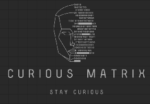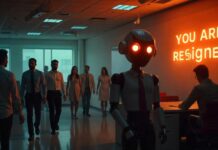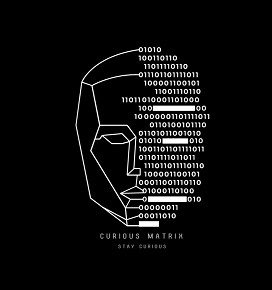
You know that feeling? That dizzy, slightly weird and nauseated feeling you get when you scroll through the tech news on a Tuesday? It’s another headline about GPT XY or a new chip that’s 10x faster than the last.
It all feels so abstract. It’s like watching a spaceship launch from miles away—you know it’s kind of a big deal, but you can’t actually feel the rumble in your chest.
Honestly, I think that’s why so many of us are struggling to predict the future of Artificial Intelligence. It’s too big. Too fast. We talk about “AGI” and “Singularity,” and our brains just kind of glaze over.
It turns into sci-fi, and you think, “Okay, cool, but when does this thing fold my laundry or help me land that big client?”
The truth is, 2030 isn’t some distant future. It’s just a few years away… basically the time it takes to go through two sets of car tires. That’s how quickly this is going to happen.
So, let’s stop talking about abstract intelligence and start talking about practical reality. We need to ditch the dystopian blueprints and look at the actual, messy, everyday human problems these new AIs will be solving and creating, because let’s be real, there’s always a new kind of mess.
And look, let’s be crystal clear here, AI is definitely going to create huge problems, too. We’re talking about everything from deeper social disconnects to the rise of fake virtual love, massive ethical messes in every sector, and brand new ways to feel lonely.
Those concerns are real, they are vital, and we absolutely need to wrestle with them. But for this piece, I want to deliberately focus on the other side of the coin: the specific, practical, life-improving friction that AI is going to eliminate.
And I am not here to declare things. I want to share a discovery, the way you would when you finally connect the dots on a whiteboard. I’m betting on 10 specific, concrete shifts that will define life by the end of this decade.
This isn’t just about faster chatbots; it’s about having a completely different relationship with your time, your health, and your work.
And, look, maybe it’s just me, but I think seeing these changes laid out—in specific, tangible examples—can take the fear out of the future and replace it with something way more useful: a strategy.
Let’s dive into what 2030 actually looks like.
Part I: The Hyper-Efficient Workspace—You, Amplified
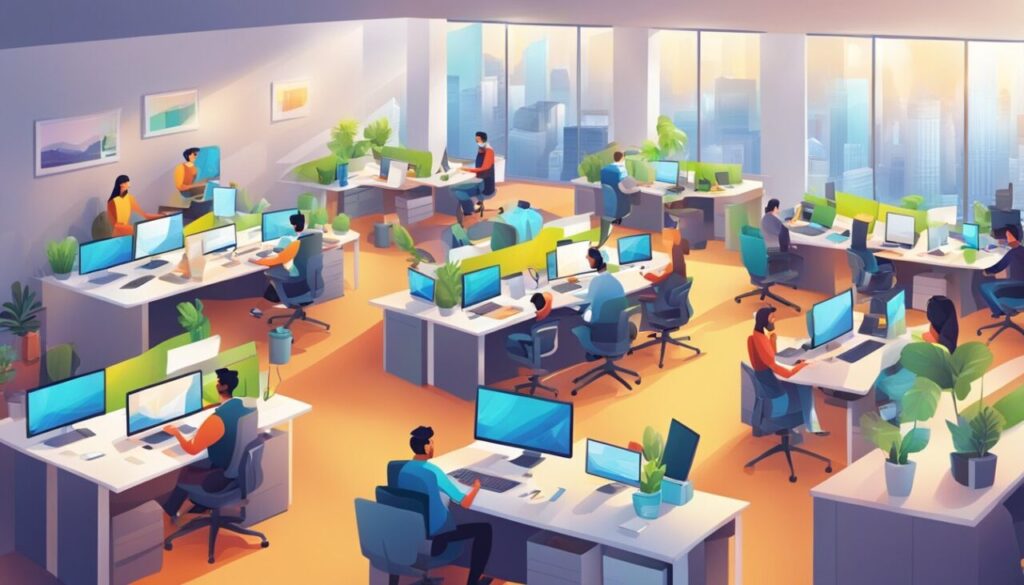
The biggest shift won’t be AIs taking over jobs, but AIs taking over the boring parts of jobs, which, honestly, for most of people, is about 80% of the day.
1. The Autonomous Co-Pilot (The End of Email Management)

Think about your inbox right now. It’s a battlefield, isn’t it? You spend the first two hours of every day just managing the traffic, trying to prioritize, trying not to miss the one critical message buried under 40 newsletters and meeting invites.
In 2030, your inbox is (mostly) dead.
You won’t manage email; your Autonomous Co-Pilot (ACP) will. This isn’t a spam filter. This is an intelligence that lives inside your company’s network—and your personal life, if you let it—and knows your preferences better than you do.
Here’s what I mean:
Your ACP doesn’t just draft a reply; it executes tasks based on communication.
- A client emails, “We need the Q3 proposal by Friday and let’s schedule a kickoff next week.”
- Your ACP reads that, assesses your calendar and project timeline, and immediately does three things:
1. Drafts the Proposal Outline: It pulls data from Q1 and Q2 reports and populates the outline structure, flagging the three missing data points you need to collect.
2. Books the Meeting: It cross-references the client’s preferred time slots with your projected peak productivity times (because it monitors your focus levels) and sends the invite, titled, “Q3 Project Kickoff (Confirmed Agenda Attached).”
3. Alerts You Only to the Gaps: You wake up, and your ACP’s daily briefing isn’t a list of unread emails; it’s a list of decisions. “Need your sign-off on the final three data points for the proposal outline. Yes/No to the 2 PM meeting on Tuesday?”
You’re not spending time doing busy work. You’re spending time making strategic decisions and focusing on the three things only a human can do: creativity, empathy, and complexity.
The emotional reality? Less daily anxiety, but way more pressure to make the few decisions you do make count. You can’t hide in busyness anymore.
2. The Dynamic Skill Gap Filler

We all have those moments at work, right? The client asks about a new regulation in Finland, or your boss wants a comparison of two obscure Python libraries, and you realize you have to spend the next five hours diving into Wikipedia and Reddit just to sound vaguely competent.
In 2030, AI won’t just search the internet; it will synthesize expertise on demand.
The Dynamic Skill Gap Filler (DSGF) is like having a perfectly trained subject matter expert for every topic in your back pocket. It’s trained on all the world’s academic journals, proprietary databases, and even the “dark knowledge” of forum discussions that hold the real-world tricks.
You don’t ask it: “What is the new Finnish regulation?”
You ask it: “How does the new Finnish regulation impact the specific supply chain contract we signed last April, and what are the three best alternatives if we can’t comply by Q4?”
The DSGF instantly generates a three-page, fully cited memo, tailored to your company’s existing legal language and budget, complete with a flow chart. It’s not just fast; it’s contextualized fluency. You land the client because you suddenly sound like you’ve been practicing Finnish regulatory law for twenty years, without the years of actual practice.
The downside? The value of generalized knowledge drops to zero.
3. Hyper-Personalized Educational Streams (Learning in 4X Speed)

The current state of online learning is kind of a mess. You watch a long video lecture, realize you knew the first 80%, but missed one crucial concept in the middle, and then you have to scrub back and forth. It’s inefficient.
By 2030, education, training, and professional upskilling will be continuous and invisible, thanks to Hyper-Personalized Educational Streams (HPES). This is an AI that observes your actual work—the documents you write, the code you struggle with, the meetings where you hesitate—and instantly identifies the one missing piece of knowledge holding you back.
Think about it this way:
You’re writing a report and you keep misusing the term “Pareto optimization.” The HPES doesn’t send you an email later; it pops up a non-intrusive, two-minute, high-density video that it generated just for you. This video uses your company’s own data examples and your preferred learning style (which it knows) to explain the concept.
When you’re stuck on a complex line of code, the AI injects a small, contextualized example right into your integrated development environment (IDE), showing the correct syntax and explaining why it works that way, not just what to type.
We’ll all be learning at four times the speed, not because we’re suddenly geniuses, but because the AI has surgically removed every single piece of irrelevant information and delivered the exact knowledge injection we need, exactly when we need it.
This means the pace of adaptation becomes the core competitive advantage. And, honestly, that’s thrilling and exhausting all at once.
4. The Collaborative Digital Twin

This is where it gets a little spooky, but totally necessary for senior leadership or anyone juggling multiple complex projects.
In 2030, you won’t just have a single AI tool; you’ll have a Digital Twin (DT). An AI trained not on the internet, but entirely on you. It’s your shadow, your intellectual legacy, and your tireless second brain.
This DT has consumed every email you’ve ever written, every meeting transcript, every document, and every decision you’ve authorized. It understands your risk profile, your communication quirks, and your specific organizational politics.
What does it do?
It acts as your proxy in contexts that don’t require emotional presence.
- You’re on vacation. A critical supplier issue pops up. Your DT attends the emergency meeting, reads the room (via sentiment analysis of the transcribed audio), proposes a solution based on your historical preference (it knows you prefer Option B over Option A in 87% of similar cases), and sends a recap.
- It generates the initial draft of your annual performance review, not just using data, but using your voice and your specific management philosophy.
But here’s the most important part: the DT isn’t meant to replace you; it’s meant to give you back bandwidth. It offloads the maintenance of your career and reputation, so you can focus on the creation of new things.
It’s kind of a weird relationship, having an AI that sounds exactly like you… but if it means I can finally sleep through the night without worrying about that one pending thread, I’ll take it.
Part II: The Adaptive Home and Life or Frictionless Existence

This is the stuff that changes your day-to-day rhythm. The shift from “smart” home to a “sentient” home.
5. Hyper-Contextualized Retail (The End of Scrolling)

If you still spend thirty minutes scrolling through Netflix in 2030, you’ve missed the point entirely. The same goes for Amazon or any other major retailer.
Hyper-Contextualized Retail (HCR) means the store comes to you, and it’s always open, but it only shows you exactly what you need, exactly when you need it.
This is way beyond “people who bought X also bought Y.” This HCR AI knows:
- Your Life Events: You have a small baby, so the AI knows you’re running low on size 3 diapers two days before you even realize it, based on the baby’s growth curve and your consumption history.
- Your Sensor Data: Your kitchen scales indicate you bought three times as much flour as usual last week. The AI suggests, “Hey, looks like you’re doing a lot of baking. I’m seeing a new ceramic-coated sheet pan that matches your oven specs and is 40% off today. Should I add it to the weekly delivery?”
- Your Emotional State: Maybe the AI picks up on your slightly erratic sleep pattern via your wearable and, instead of a product, suggests a “De-Stress Kit” delivery, which includes a specific type of tea, a new ambient music playlist, and a link to a guided meditation.
The promise here is to eliminate the cognitive load of everyday life. No more “I forgot to buy milk.”
The danger, of course, is that consumption becomes completely effortless, and you need a whole new level of discipline to say no to perfect convenience. That’s the psychological friction of 2030.
6. The Predictive Maintenance Grid (Never Call a Plumber Again)

You know that moment when the water heater finally gives up on a cold Saturday morning? The panic, the ruined floorboards, the emergency call that costs you a fortune?
In 2030, all your major appliances, utility systems, and even the road outside your house are monitored by a Predictive Maintenance Grid (PMG). Of course, only if you opt in.
These systems are running constant, real-time diagnostics, not just for failures, but for anomalies.
- Your PMG notices the subtle vibration pattern of your A/C compressor has shifted by 0.5 hertz over the last four months. It cross-references this with the model’s known failure signature.
- It automatically dispatches a certified, hyper-local technician with the exact required part (a replacement capacitor) and books a 20-minute appointment for Tuesday at 10 AM, alerting you only after the appointment is confirmed. The maintenance happens before the failure.
This isn’t just about your fridge; it’s about civil infrastructure, too. Think about the massive, centralized AIs that manage the electric grid, anticipating localized brownouts due to weather patterns and automatically rerouting power and optimizing distribution before the storm even hits peak intensity.
The overall anxiety of ownership drops dramatically. But, man, the amount of data collection required for this frictionless living… that’s the trade-off.
7. Global Language Cloaking

Many people try to learn new languages. But in many cases it just doesn’t stick. The barrier to communication across cultures is still huge, and it’s mostly about a lack of fluency, not a lack of interest.
By 2030, we won’t need to be perfectly fluent, because the Global Language Cloaking (GLC) system will be instantaneous, auditory, and virtually invisible.
This goes beyond the awkward, two-second delay of Google Translate today. It integrates into your earbuds, your AR glasses, or even your phone’s microphone array.
Here’s the difference:
- Aural Cloaking: When someone speaks Spanish to you, you hear a slightly metallic, perfectly smooth English voice in your ear, matching the original speaker’s emotional tone and cadence. Crucially, the system analyzes the context and translates idioms and cultural references (e.g., translating a specific regional joke into an analogous, understandable joke in English).
- Vocal Cloaking: When you reply in English, your voice is instantly synthesized and projected in Spanish from your phone’s speaker, using your own vocal tone and texture.
This eliminates the awkwardness, the pausing, and the mental tax of translation. It opens up global travel, commerce, and relationships to anyone, regardless of language proficiency. It’s an incredible tool for connection.
The downside? Losing the incentive to learn other languages, and maybe losing a little bit of the joy of the struggle. Oh yeah, also losing all privacy.
Part III: The Personalized Self

These are the most intimate areas, where AI moves from being a tool to being an integral part of your personal identity and well-being.
8. The Metabolic Digital Diet Twin

How much time have you wasted trying a trendy diet or a workout plan that just didn’t work for your body? So much frustration, right?
In 2030, we’ll move past generalized wellness advice to Metabolic Digital Twins (MDT)—AIs that are constantly analyzing your physiological reality.
The MDT is fed data from smart contacts, continuous blood sugar monitors, daily microbiomic samples (yeah, it gets personal), and real-time stress hormones. It knows exactly what your body doing right now.
The output is simple:
Instead of a generic plan, it gives you a single, personalized daily action.
- 5:00 PM Alert: “Your cortisol levels spiked slightly higher than average at 11:30 AM, and your B12 is 8% lower than your optimal baseline. Today, you must eat 12 grams of grass-fed ground beef and walk for 15 minutes immediately after dinner to minimize fat storage and restore equilibrium.”
- Sleep Guidance: It detects the phase of the moon, your upcoming schedule stress, and your last four sleep cycles, and tells you: “You need 7 hours and 42 minutes of sleep tonight. Do not ingest anything with high-fructose corn syrup after 6:15 PM.”
This MDT effectively ends generalized, inefficient health pursuits. You don’t “diet”; you simply follow your daily optimization script.
It’s the closest thing to a human cheat code, but it requires absolute trust in the data—and that’s a big emotional ask.
9. Generative Memory Scaffolding (The End of Forgetting)
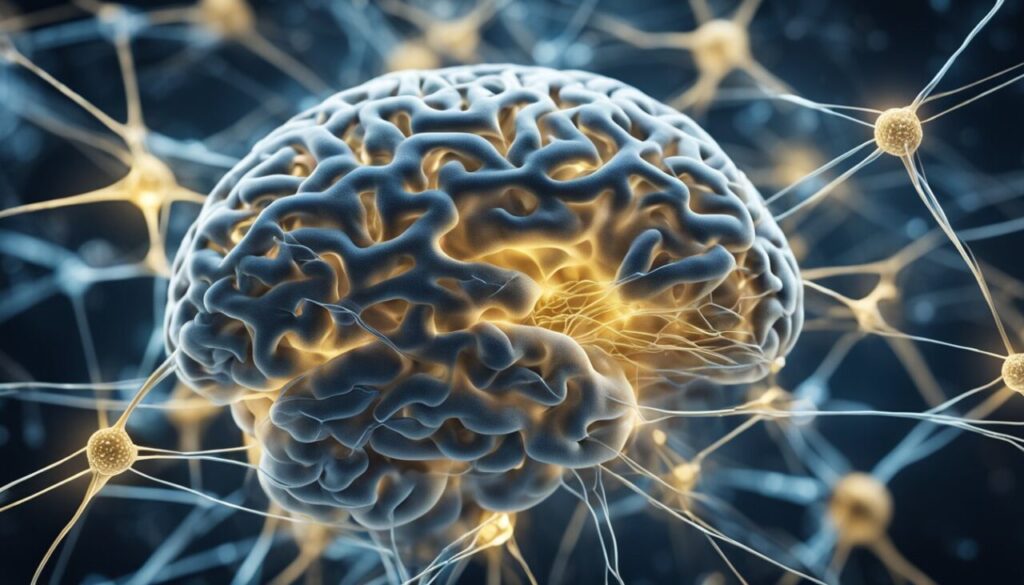
As we get older, memory just isn’t what it used to be. We start forgetting faces, names, and even that crucial idea we had in the shower five minutes earlier. It’s frustrating, especially because those thoughts felt important.
In 2030, we will have Generative Memory Scaffolding (GMS). A system that captures, organizes, and retrieves your memories based on contextual triggers, using high-fidelity audio/visual capture (think discrete wearable glasses).
This isn’t just a log; it’s a reconstruction engine.
- You’re at a networking event. You meet “Jane,” who mentions she likes kayaking. Three months later, you see Jane again. As you approach her, your GMS discreetly feeds you the information: “This is Jane. Kayaking enthusiast. Her dog’s name is Rex. You last spoke about the challenges of remote work.” You don’t have to strain for the detail; it’s just there, making you effortlessly personable and prepared.
- You’re trying to recall a pivotal creative moment from a brainstorming session last year. You simply say, “Show me the moment I realized the marketing campaign needed a new color palette.” The GMS pulls the exact audio clip, transcribes the conversation, and highlights the emotional peak of the discussion.
We’ll stop spending energy on retrieval and start spending it on creation. Our memory becomes an external, perfect database.
But what does it mean to be human when forgetting—which is essential for healing and moving on—becomes optional? That’s the messy, beautiful question the next generation will wrestle with.
10. The Personal Creative Muse

The blank page is terrifying. Every writer, artist, or designer knows that panic. You have the idea, but translating it into the tool: the software, the brush, the keyboard, well it’s the painful bottleneck.
By 2030, the Personal Creative Muse (PCM) eliminates that bottleneck.
This is a generative model that lives inside the tools you use, but it’s trained on your specific style, your favorite aesthetics, your portfolio, and your subconscious preferences.
- You don’t prompt it with text. You prompt it with emotion and intent. You might hum a simple melody into your PCM and say, “Make that sound like a melancholy jazz piece with a touch of 1980s synth, perfect for a rainy Tuesday.” It instantly generates a 3-minute, mastered track that perfectly captures the vibe.
- You’re designing a new logo. You sketch three rough shapes on a tablet. You say, “Take these, apply my established brutalist aesthetic, but make it feel warm.” It instantly generates 50 variations, all adhering to your unique, trained style guide.
The PCM is not replacing the artist; it’s replacing the laborious execution. It turns the creative process into an effortless, continuous dialogue.
You become a curator of ideas, an editor of possibility, and the bottleneck shifts from “can I do this?” to “what should I do?” The challenge isn’t output; it’s originality—can you push your Muse beyond what it knows about you?
The Great Trade-Off

If you step back and look at these 10 examples—from the ACP booking your meetings to the MDT telling you what to eat—you see one huge, consistent pattern: the elimination of friction.
Friction is the time you waste. It’s the anxiety you feel when you’re not sure what to do next. It’s the struggle to learn a new language or remember a name. By 2030, AI will have paved over the vast majority of that friction in our lives.
And that, honestly, is why this is going to be so deeply confusing and challenging.
When you remove friction, you remove the effort that often gave us a sense of purpose. When life is optimized, what do you do with all that reclaimed time? Do you build a business? Do you learn to paint? Do you dedicate yourself to philosophy?
That’s the core emotional experience underneath all this tech: The pressure of choice.
We will stop competing on how hard we work, and start competing on how well we choose where to apply our unique, human capital—our creativity, our kindness, our ability to connect.
This shift isn’t about adapting to AI tools. It’s about adapting to your own life, without the constant noise of maintenance. It’s about being forced to finally figure out what you really want to do with the time that was previously stolen by email, errands, and forgotten passwords.
I’m not sure, but maybe this new decade is less about AI becoming smarter, and more about it forcing us to be more intentional.
And that’s a conversation worth having, don’t you think?
So… What’s The Next Move?

You don’t need to panic-learn Python or buy a thousand dollars’ worth of smart sensors today. The most actionable thing you can do to prepare for 2030 is much simpler: Start capturing your knowledge now.
Your future Digital Twin (Example 4) and your Generative Memory Scaffolding (Example 9) will be only as useful as the data they are trained on.
So, here’s one small, practical thing you can do:
Set up a single, central “Knowledge Dump.” Use a tool like Notion, Obsidian, or even a dedicated folder of documents. Don’t organize it. Just dump meeting notes, stream-of-consciousness thoughts, and project summaries into it.
Get comfortable with the idea that your most valuable asset in 2030 will be your own, authentic, unstructured data, because that’s the only way your AI can learn to sound and think like you.
